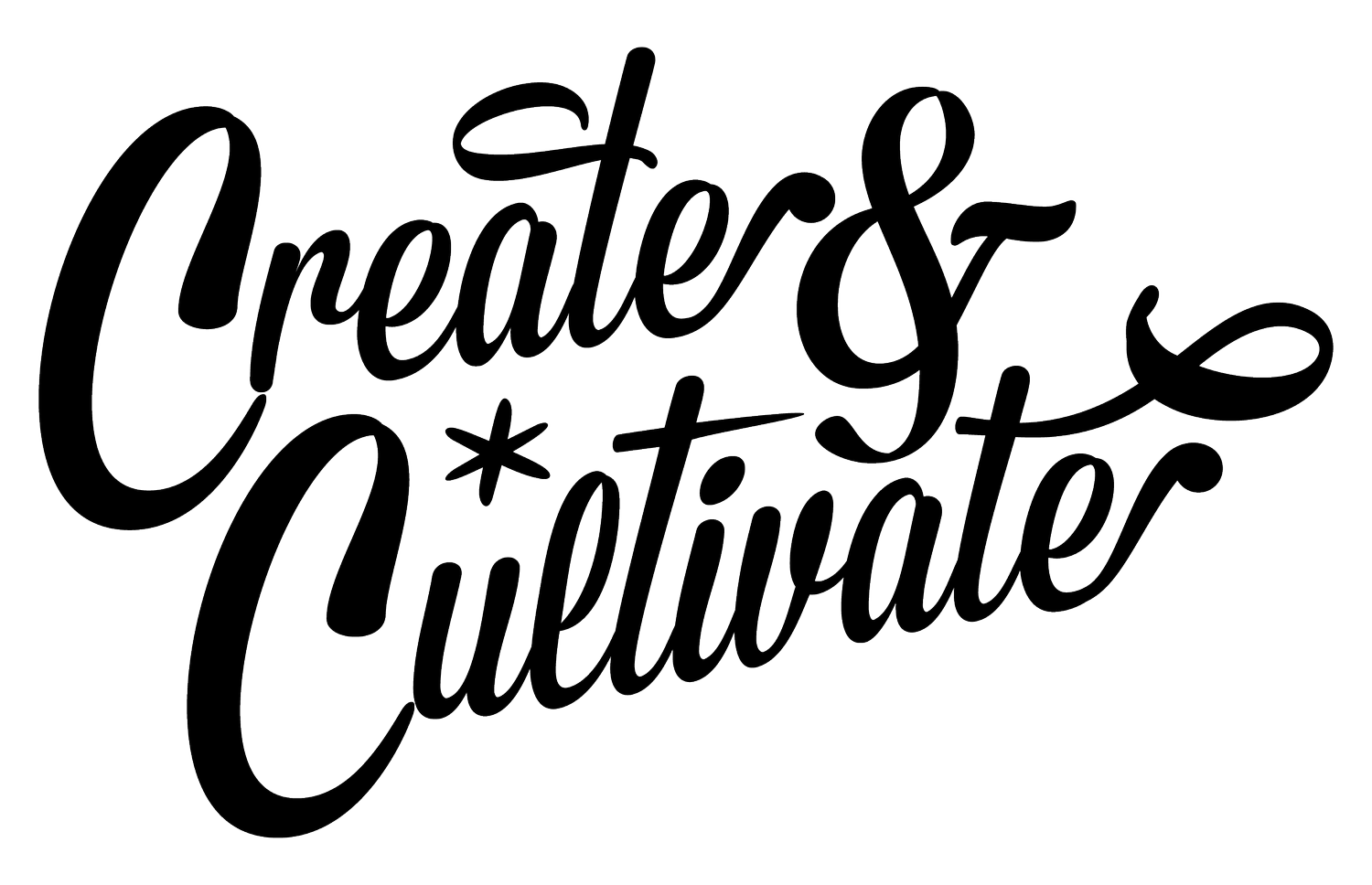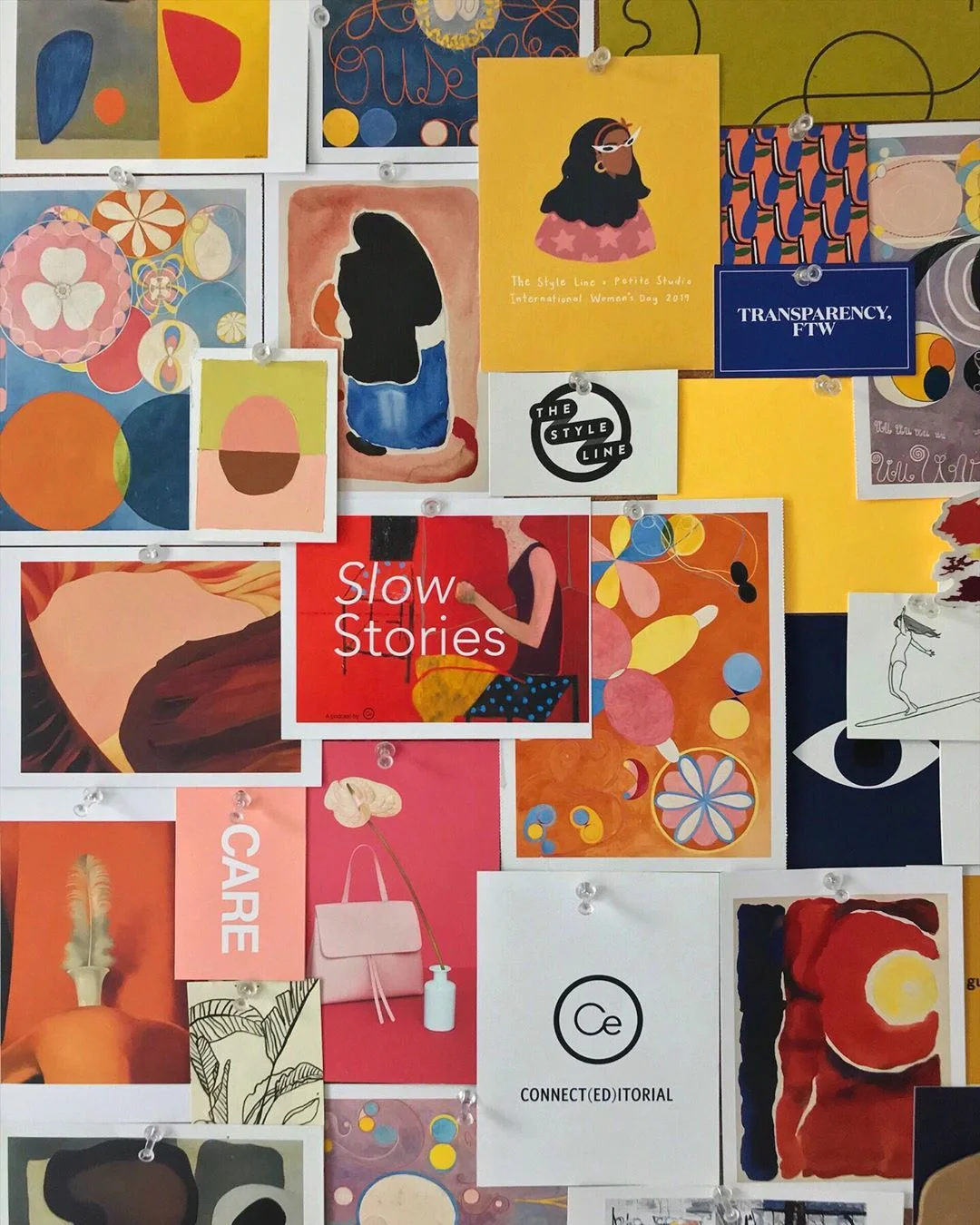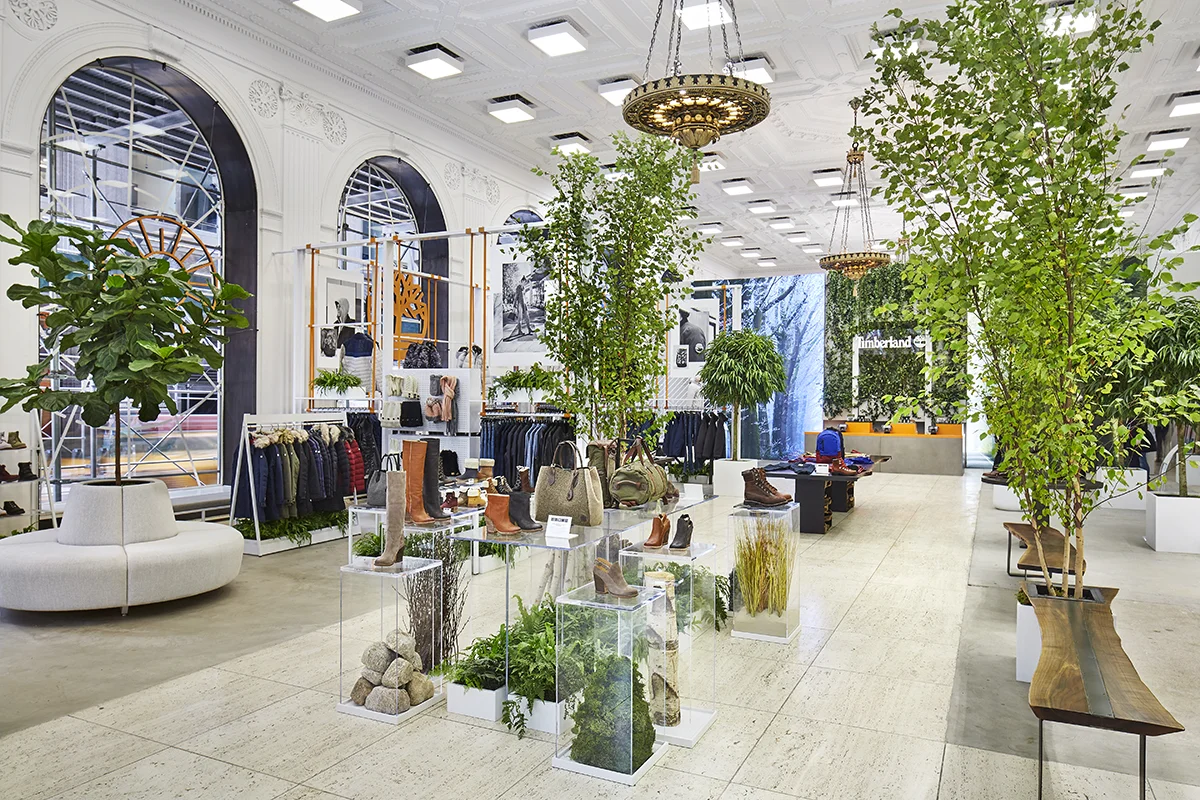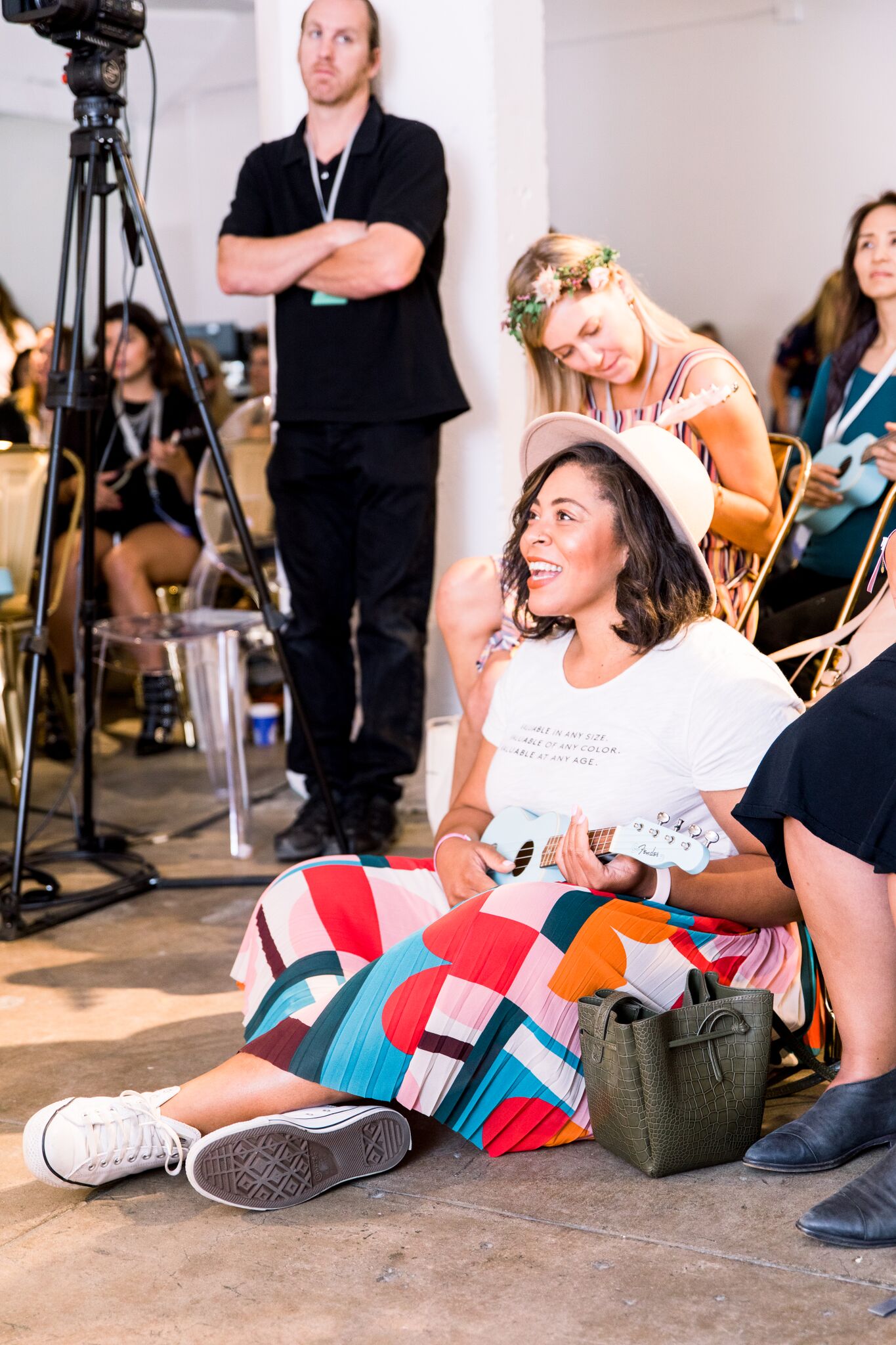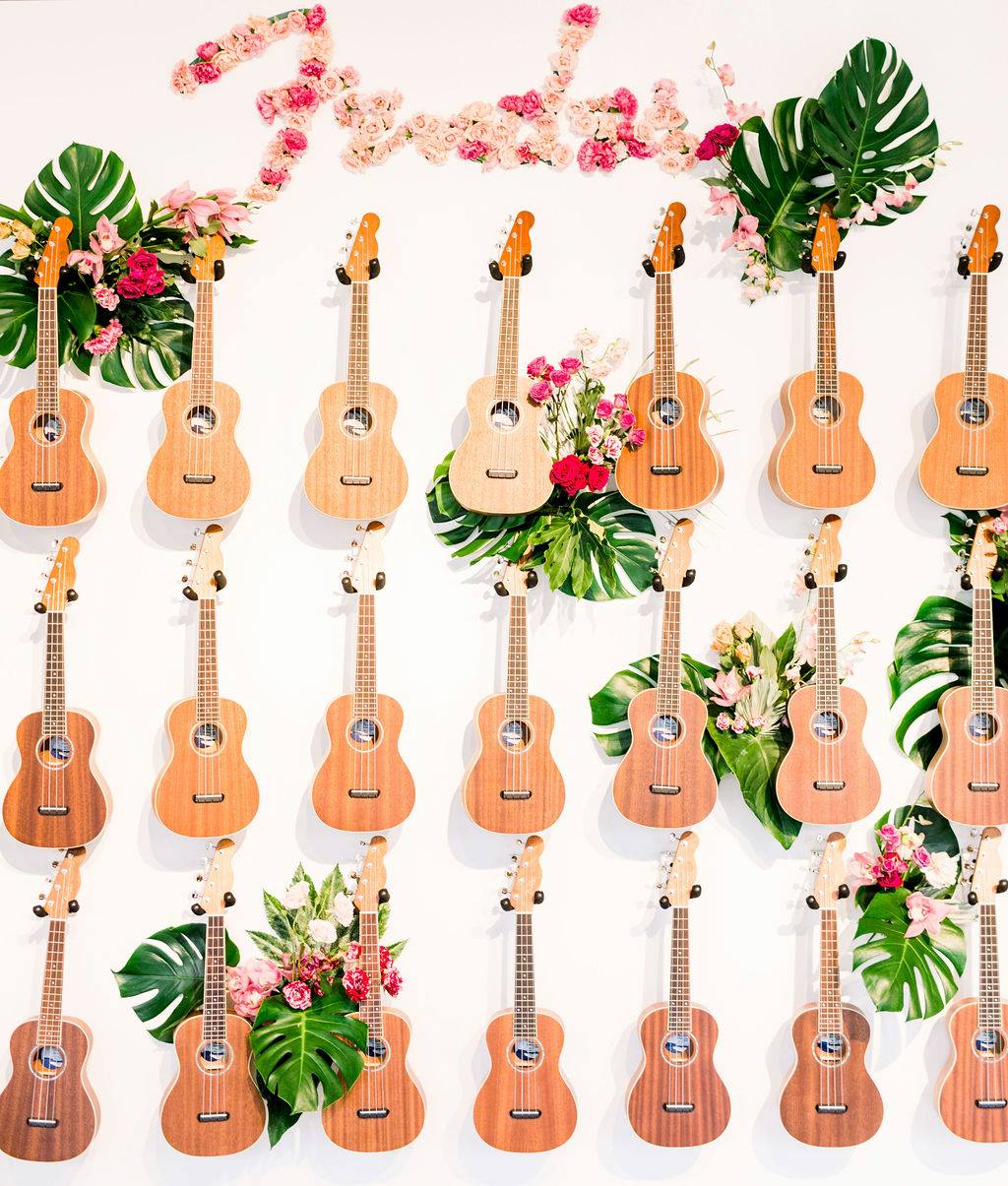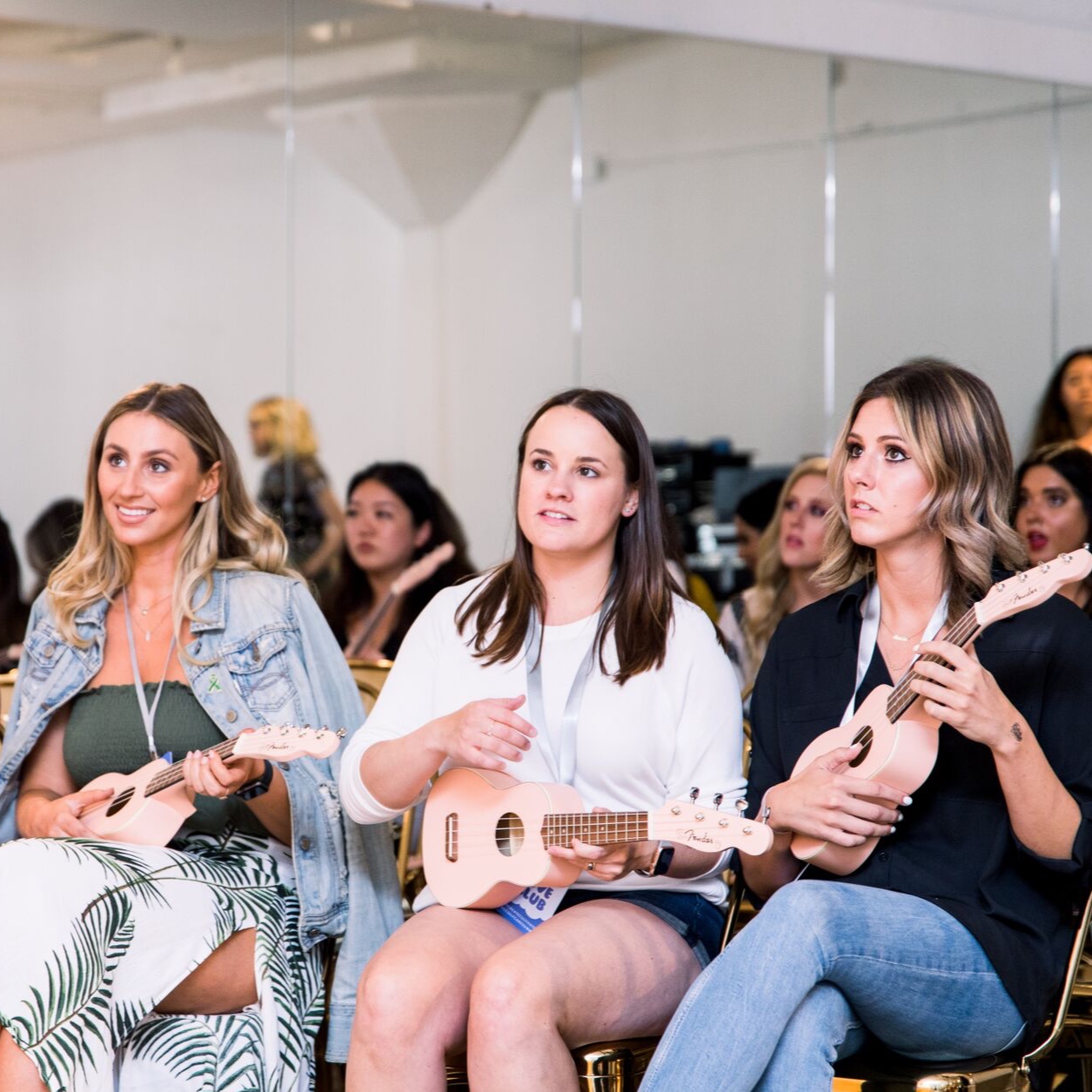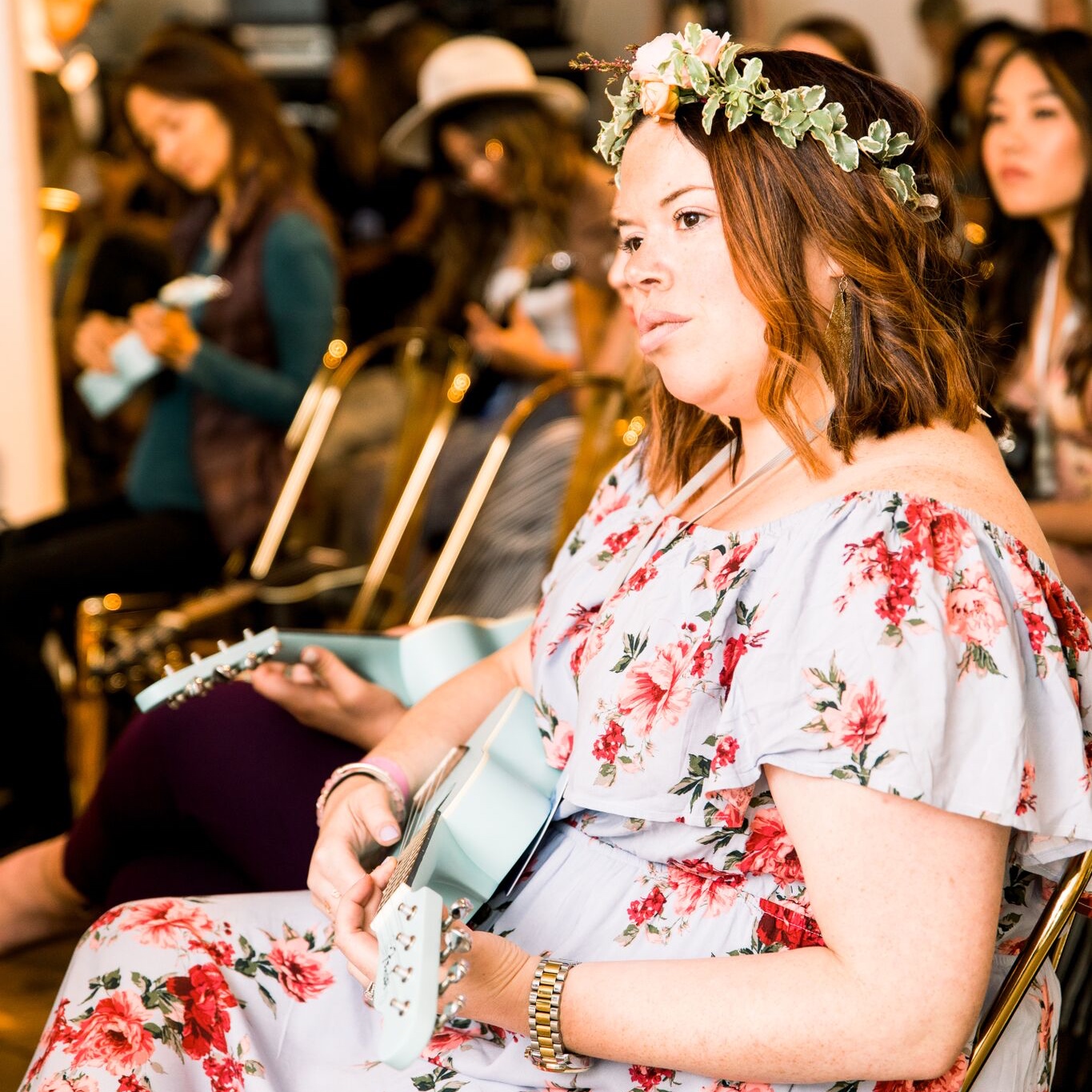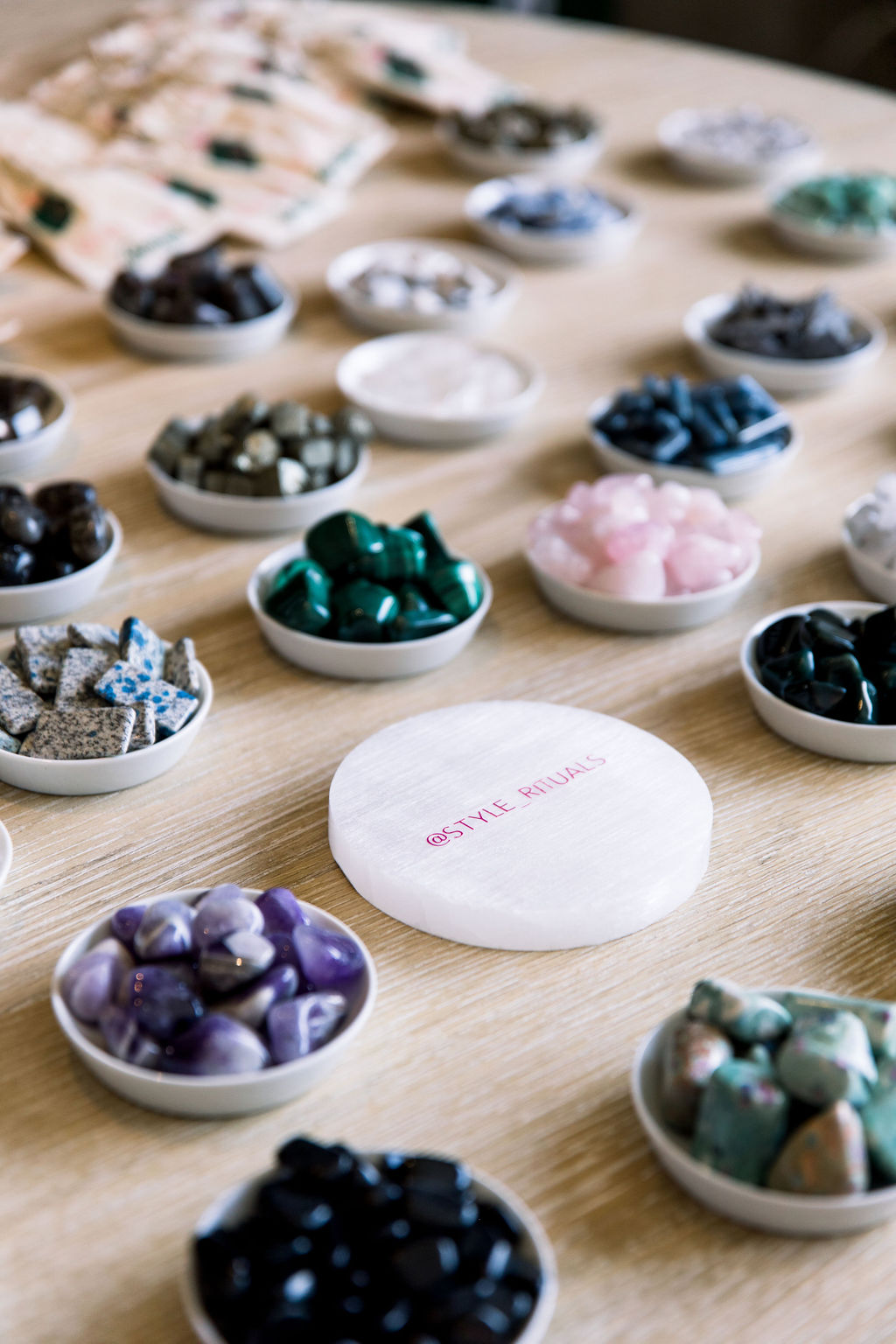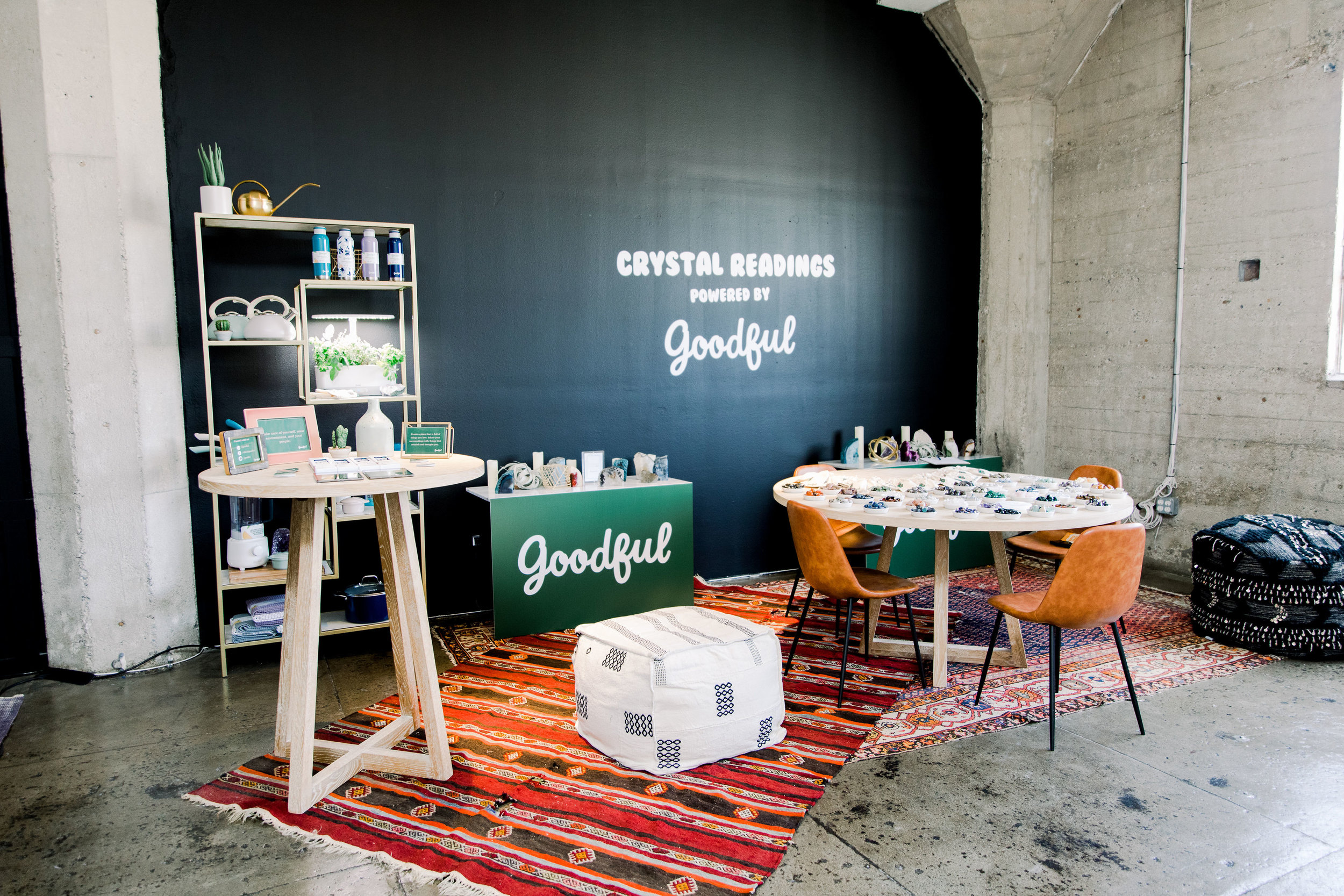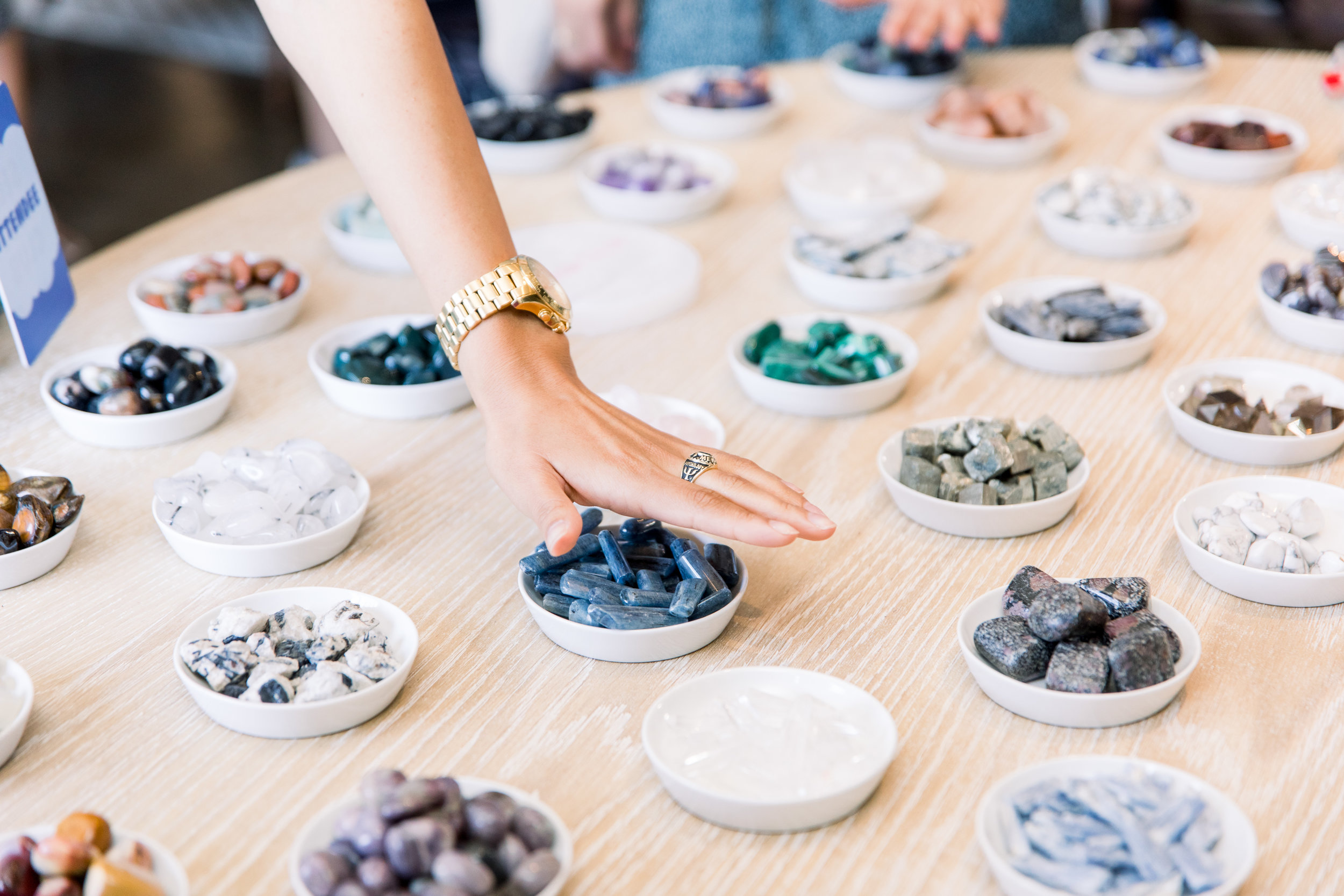So Matcha Goodness Awaits — Why You Should Be Drinking This Ancient Tea Every Day
How to Enhance Your Mental Wellness at Work (and Be Happier and Healthier)
From Scratch: How One Founder Is Giving the Beauty Biz a Makeover, One Natural Ingredient at a Time
Slow Stories—Literally, Slow Down: How Taking a Content Break Can Lead to Successful Storytelling
From Scratch: How This Founder Turned the Gut Health Trend Into a Best-Selling Beauty Brand
Nature Needs Heroes—Timberland Is Calling on the Next-Gen of Conscious Creators to Put the Planet First
Everyone's Got Rhythm: How Music Promotes Happiness and Well-Being
Have you ever taken a moment to consider the power of music? According to research by the National Alliance of Mental Illness music therapy can benefit several mental health conditions including depression, trauma, and schizophrenia (just to name a few). Apparently, music acts as a medium for processing emotions, trauma, and grief but it can also be a calming agent for anxiety. That’s some powerful stuff, right?
Beyond music’s therapeutic abilities, just listening to music and playing instruments raises our overall happiness meter. We’ve all experienced those warm and fuzzy emotions when a nostalgic throwback song comes on the radio and we are instantly transported to another space in time. Music affects our sensory system more than we realize.
What if we told you that you could improve your mental health just by learning how to play a new instrument? You don’t even have to master it. Just learning how to read sheet music or attempting to play the chords can have the same positive impact. Oh, and from the comfort of your own home, or car, or desk—we aren’t joking!
Our friends at Fender have created an app known in the marketplace as Fender Play and we are in awe of its capabilities. This groundbreaking app teaches you how to play guitar, ukulele and bass, anywhere. Attendees at our Self Care Summit this year were some of the first to experience the app during the Fender Play ukulele class. But if you couldn't be there, we interviewed Fender Digital’s Director of Product, Mary Keenan to take a deep-dive on music therapy, how to play an instrument at the tap of an app, and so much more.
Follow along for some hard-hitting facts and deep insight on why music is something we all should embrace—for the betterness of our minds and bodies.
Create & Cultivate: What does your role entail at Fender? In what ways does your role touch Fender’s app, Fender Play? How long did it take to develop? Tell us everything!
Mary Keenan: “I oversee the curriculum and learning for Fender Play. I work closely with the other members of the product team to define the learning experience in the app. My team designs and writes each of the lessons used on Play and interacts with the production team to get it shot. We publish all of our content and, most importantly, provide support to users who are actively using the program. That helps us to shift our curriculum roadmap as we grow.
“We just celebrated our two-year anniversary. From initial germ of an idea to launch, it didn’t take us long to write and shoot the few hundred lessons we started with. However, we are expanding our content every day and have gone from hundreds to thousands today.”
C&C: Can you provide us with a rundown on the app? Why should people download it?
MK: “Fender Play is an online learning platform specifically for beginners. It’s designed to get you playing in minutes using a guided learning experience showing, step-by-step, how to get there. We bring players from the first step, how to hold the instrument, all the way through playing songs at an intermediate beginning level.
“Why download it? Because it works. We have over 17 thousand five-star reviews from users telling us this is the first time since trying to learn that they’ve really been able to play. That’s exciting to hear, but not really surprising. It’s because we approach learning a little differently than other programs.
“Our goal is to cater to busy lifestyles. Not only can you practice anywhere, anytime but Fender Play also helps you learn hundreds of skills with lessons averaging two to six minutes in length. Our videos are shot in very high-quality 4K, with clean and simple concepts presented one at a time. We break down what is a very overwhelming process into bite-sized, achievable steps. Anyone who has a goal of learning to play and gets motivated by quick results is going to love the approach.”
C&C: In your own words, how does music cultivate happiness?
MK: “When we think and talk about music, we often think about it as a hobby. But music is actually an essential part of our physical, mental and emotional health. There is ample research surfacing about how the brain and body reacts to music, thus uncovering more about the benefits of music than ever before. From my perspective, music cultivates happiness by bridging gaps—creatively, socially, academically and even deep in the recesses of our own brain.”
C&C: How is learning to play an instrument and read music crucial to brain health?
MK: “The list of physical and emotional advantages of playing an instrument is about a mile long. It helps with speech, literacy, math, dexterity, emotional intelligence, improved memory and overall IQ. It turns out that we use many parts of our brain when we listen to and play music.
“If we play enough to develop muscle memory, it gets stored for the long term in the cerebellum. Reading music taps into the center of the brain where language is processed. Playing an instrument is a complex psychomotor task, which means that it requires a combination of motor control, auditory and cognitive work to even happen.
“More recent research shows that everyone benefits from musical instruction, from very young children to seniors. Our brains have neuroplasticity which allows us to actually cause measurable changes by playing music. So cognitive and neural function is improved across the board, regardless of age. Fender Play takes advantage of this finding by applying some key learnings from neuroscience and biomechanics to the instructional approach.”
C&C: Music has the power to impact us on a deep, emotional level. How can music be therapeutic? How can music learning enhance our well-being and mental health?
MK: “Music is very connected to the emotional centers of our brain. When we listen to a song that we like we get a rush of dopamine, which is the hormone that puts us in a good mood, motivates us, and helps us to focus and complete tasks.
“Our approach leans into popular, familiar songs as a way to motivate our users to play. Each time a skill is learned, it’s presented again in the context of learning a new song, to promote learning transfer. Players feel excited about their progress and even more so about their playing when it’s applied to something familiar and fun.
“Research shows that learning music isn’t as effective at making changes to your brain when it’s music that we don’t like. But when we do like a song, that’s when you really start to see the impact on mental and emotional health.”
C&C: Are you aware of any scientific leads or proven facts surrounding music’s connection to well-being? If so, what might they be?
MK: “As for recent research, a couple of studies caught my eye this summer, two in particular that came out of the University of British Columbia. Both have different but important implications for learning and what we are trying to accomplish with Play.
“*University of British Columbia published a study in the Journal of Educational Psychology that demonstrated how students who learned to play a musical instrument in elementary school and then continued playing that instrument in high school were approximately one full year ahead of their fellow students in English, math and science. And the academic gains were even more pronounced for the students who played an instrument rather than taking vocal music.
“**Another really interesting bit of research was also released by the same university’s School of Health and Exercise Sciences. We have a natural tendency to adapt our own biological rhythm to match musical rhythm. Apparently upbeat music can make a hard workout seem less difficult—and not just emotionally. It’s so effective that it actually elevates our heart rate and peak power during exercise. Ultimately it can make challenging things literally feel less difficult to do.
“Taking it further, I recently came across an author and podcaster named Indre Viskontas who is a professor at the University of San Francisco. Her book How Music Can Make You Better is a wonderful read on just this topic. In the book, she talks about Melodic Intonation Therapy which is used in music therapy to help patients recover from traumatic brain injuries and strokes. It’s a fascinating picture of how music not only improves well-being, but is also used to treat conditions like anxiety, depression, autism and dementia. If we can increase academic achievement, make difficult things feel easy, and overcome debilitating mental and physical conditions by simply learning to play an instrument, it may just be worth giving it a try.”
References:
*Martin Guhn, Scott D. Emerson, Peter Gouzouasis. A population-level analysis of associations between school music participation and academic achievement. Journal of Educational Psychology, 2019; DOI: 10.1037/edu0000376
**Matthew J. Stork, Costas I. Karageorghis, Kathleen A. Martin Ginis. Let’s Go: Psychological, psychophysical, and physiological effects of music during sprint interval exercise. Psychology of Sport and Exercise, 2019; 45: 101547 DOI: 10.1016/j.psychsport.2019.101547
This post is in partnership with Fender.
Crystal Me This: How This Self-Care Tool Will Clear Your Mind (and Your Inbox)
This is in partnership with our friends at Goodful. Get social with Goodful on Instagram and surf their Youtube channel for some amazing content!
Busy? Let’s pause for a second. Take a deep breath. Think about where you are at this exact moment. Have you taken a chance to set your intentions for today? How about tomorrow? What about for the month or even the year? Have you had a second to yourself at all today? Maybe not. We know those emails are stacking up in your inbox, your phone hasn’t stopped ringing since 9 a.m., and you are teetering between the idea of going straight home after work to binge-watch your favorite Netflix show or finally attend that pilates class you’ve been missing since the second week of the new year (resolutions are hard, we get it!). Consider this: maybe now is the time for you to evaluate what self-care means to you and how you can incorporate it into your life as seamlessly as possible.
What comes to mind when you think of self-care? Supplements? Meditation? A 10-step skincare routine? How about crystals? Yup. We really just said crystals. Crystals are great in many ways—specifically to aid the alignment of one’s inner self and inner peace. They can also be used just about anywhere and everywhere. When you’re stressed at work, we suggest placing a few key crystals on your desk for some assistance. Amongst all the hustle and stress of our professional lives, who wouldn’t want a tangible piece of, well, peace.
We had the pleasure of meeting crystal guru, author of Crystal RX, and founder of Style Rituals, Colleen McCann, at our Self Care Summit on behalf of our friends at Goodful. You can tap into their wealth of wellness content from videos to guides on their social handles. You can also shop their wellness focused products and gifts at Macy’s!
After the event, we picked Colleen’s brain about how to use crystals for work, how to transcend their positive attributes while at work, and so much more. Follow along for some hardcore crystal knowledge (that you probably had no clue existed). You’re welcome.
Create & Cultivate: What power do crystals hold in regards to attracting good vibes and positive energy at work? How can we use crystals for protection at work?
Colleen McCann: Every crystal carries its own meaning, message, medicine, and vibration—or as I like to say, an “FYI from the universe”. Depending on which crystal we gravitate towards, it will inform us on what’s happening in our lives and how we can achieve different goals. Below, you will find a list I have made of the top-tier crystals based on my consulting sessions with boss-babe clients.
CITRINE
What it does: Known as the ‘Merchants Stone’ since ye’ olden days. It’s the crystal of business abundance, personal power, and positivity.
LAPIS LAZULI
What it does: Stone of communication, wisdom, and truth. Fashion icon and ancient girl-boss, Queen Cleopatra, used crushed Lapis Lazuli in her cosmetics to create her signature eye makeup.
Woo-woo tip: If you are giving a presentation in front of a client or asking your boss for a raise, then wear a lapis lazuli necklace that way it will be close to your 5th/throat chakra.
HERKIMER DIAMOND
What it does: Like #badgirlriri said, “shine bright like a diamond”. As a stone radiance, Herkimer Diamond assists us in being seen and growing our inner-light.
DUMORTIERITE
What it does: The stone of patience.
AMETHYST
What it does: A stone that wards off energy vampires. If you work in a stereotypical toxic industry, in close proximity to toxic coworkers, or circulate in large groups in your profession, then this is the stone for you.
Woo-woo tip: When going to the boardroom for a meeting or after-work drinks with colleagues, wear it in your bra.
SHUNGITE
What it does: This crystal absorbs man-made EMF’s (electromagnetic frequencies) that radiate off of items like smartphones, computers, microwaves, and all other electronics found in the workplace.
AMAZONITE
What it does: This is the get-your-shit-together stone. Amazonite is a stone of the astrological sign Virgo. We know Virgo’s are neat, grounded, detail-oriented, practical, list-making machines. Embody your inner-Virgo and get organized—whether it’s sorting the files on your desktop or polishing up your signature work-style attire.
FLUORITE
What it does: This gem helps us with clarity and mental focus.
BLACK OBSIDIAN
What it does: The stone for grounding. If you also travel for business regularly, this is a great crystal to pack in your carry-on.
GARNET
What it does: Working overtime? Garnet gives us the life force and vitality to get through a long day at the office.
CARNELIAN
What it does: Carnelian works with our sense of community, emotions, willpower, and confidence.
IRON PYRITE
What it does: The crystal for manifestation.
Woo-woo tip: The new moon is the best day of the month to call new energy into our lives. On this day, write a list of all the action items you’d like to see realized for yourself in your career and place an Iron Pyrite on top of the list. Make a practice of looking at what’s on the list every day. Simply said: energy goes where we put it.
SELENITE
What it does: Stay in the flow with the energetic air purifier. Selenite absorbs dense energy that hides in places like storage units, supply closets, under desks, and corners of a conference room.
C&C: When are crystals most powerful?
CM: Energy goes where we direct it. Crystals are most powerful when you interact with them on a daily, weekly, and monthly basis. It’s just like any other relationship—when you put attention towards something, the outcome flourishes in that arena.
C&C: How many crystals should one person have?
CM: A person can work with one or many crystals. The amount determined is situational. I decide what crystals my clients should be working on based on their individual needs.
Does the location of the crystals affect their potency? Where are they the strongest in an office or desk space?
CM: Location, location, location—am I right? If you are interacting with a crystal daily at work, it's best to keep it in close proximity to your personal workspace.
Place Iron Pyrite (manifestation) on top of your business card, pitch deck, script, brief, trend board, etc.
Shungite, Black Tourmaline or Smokey Quartz near the computer, smartphone, etc. as all three absorb manmade EMF’s (ElectroMagnetic Frequency).
Lapis Lazuli (communication) and Carnelian (sense of community) in the conference room.
Citrine (business abundance) belongs in your purse, on your desk, or near a cash register at a brick and mortar or pop-up shop.
Bloodstone (physical health, blood flow, energy, good chi) in your pre/post office workout bag.
Amethyst (protection from energy vampires) on the outer perimeter of your desk or entrance to your building or personal office.
We talked about crystals for in the office but what about when we need to practice self-care and take an OOO!
LEPIDOLITE
What it does: Crystal ‘xanax’. I like to hold this crystal in my palm.
ROSE QUARTZ
What it does: When you need to take a spa day, it’s the stone for self-love. I like to wear this around my neck or keep it in my bra so it is close to my heart chakra—the chakra that Rose Quartz resonates with.
DALMATION STONE
What it does: This crystal helps to calm the running thoughts and silence the monkey mind.
TIGERS EYE
What it does: The stone for protection in travel. Keep it in your carry-on.
